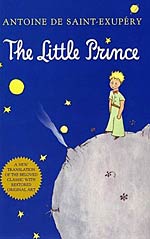
![]() Rhondak101
Rhondak101
2/14/2014
![]()
The Little Prince (Le Petit Prince; 1943) is one of France's greatest literary exports. Written by Antoine Saint-Exupery, it still sells two million copies a year, according to a recent story on NPR. The Little Prince is a children's book illustrated with watercolor drawings executed by Saint-Exupery. The book tells the story of pilot who must land his plane in the desert. While trying to repair his plane, he meets the little prince, who is visiting Earth from the asteroid B-612. Over several days, the little prince tells the pilot about life on his asteroid. He seems to be the only inhabitant. On his asteroid, he tends the plants, pulls up seedlings of baobab trees (they grow too big for the asteroid), and tends three tiny volcanoes. When a new flower appears on the asteroid, he begins to fall in love with it. When he begins to feel trapped by his love for her, he decides to travel. He visits several other asteroids and finally ends up on earth.
The book preaches that children must always have patience with adults because adults don't always understand: "Grown-ups never understand anything by themselves, and it is tiresome for children for children to be always and forever explaining things to them" (4). The Little Prince's journey to the other asteroids highlights adult behavior: he sees a king who values his authority too much; a conceited man who expects acclaim; a tippler who lives for the contents of his bottles; and a worker who places his job before everything. The most important "adult" figure he meets is the businessman, who believes he owns the stars and continually counts them. He tells the Little Prince that he's only "concerned with matters of consequence" (38). The Little Prince learns about life and love from a fox, who lives on Earth. The Little Prince then teaches the pilot, who is becoming more and more adult, how to look at the work with a childlike wonder. We all need to be reminded of this; therefore, everyone should read this book.